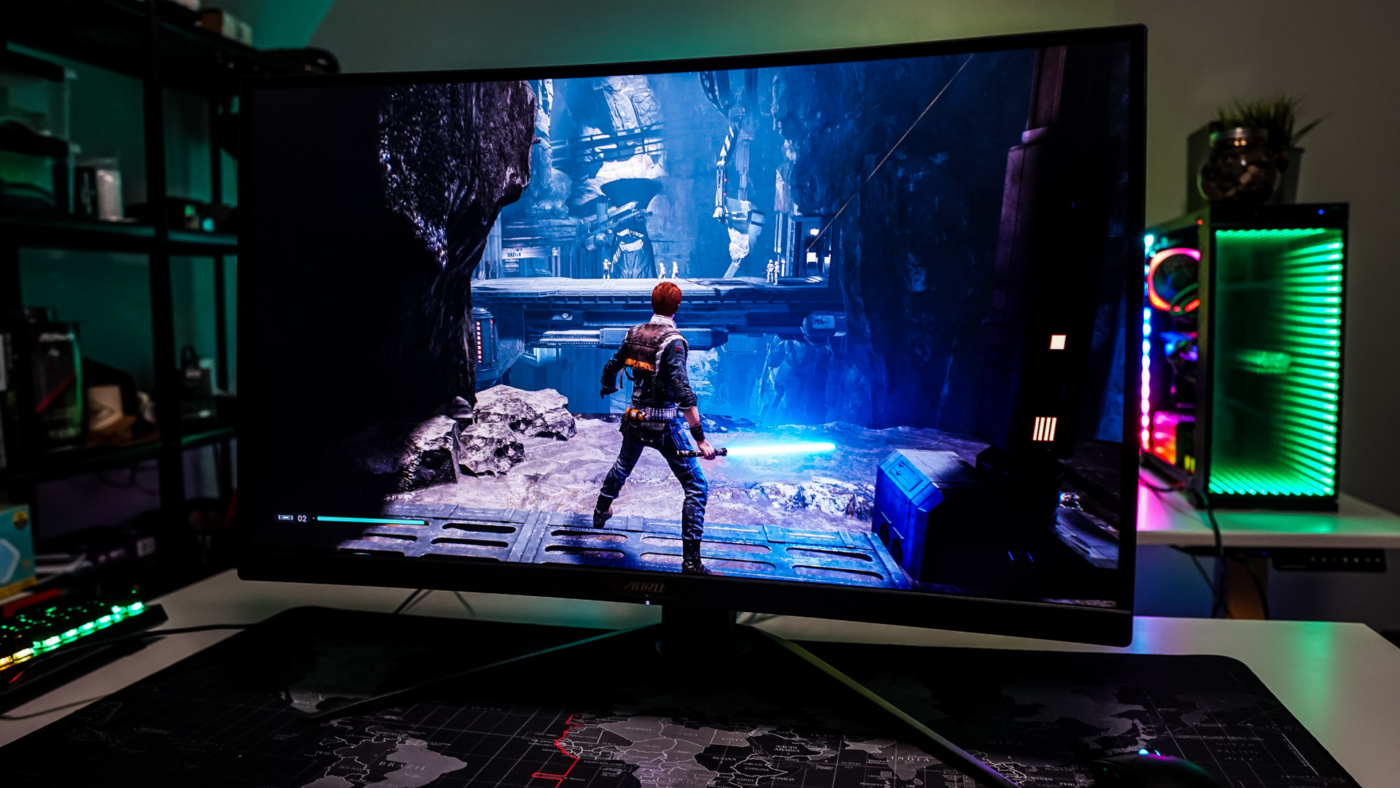The gaming community can be a very enthusiastic crowd with passionate gamers who truly love their equipment, games, and competitive lifestyle. Just like a musician, gamers love to talk about their instruments, or in this case, their gaming equipment. Part of becoming a gamer is owning the right equipment for gaming. In this article, we’ll discuss some of the most important things to consider when choosing a gaming monitor.
But before we get to that, let’s understand why it’s important to use gaming monitors. Unlike standard monitors, gaming monitors are designed to handle visually complex and high-resolution displays in games. Thanks to their advanced graphics processors (GPUs), they can avoid frame disruptions and glitches that could affect gaming performance. Here are things to remember before purchasing:
1. Monitor Size
What size is ideal for you? What size can your graphic card handle?
These two questions are what you’ll need to ask yourself when choosing monitor size. When it comes to an ideal size, it’s largely based on your personal preference. While other players love huge monitors, some prefer smaller ones to focus better on gaming.
Of course, bigger monitors with wide displays tend to cost more. You’ll also need to factor in how much you’re able to notice the small details and how far away you sit from your computer. When it comes to graphic cards, not all can handle the size of your monitor. So make sure to check your graphics cards first before purchasing a monitor.
2. Display Resolution
The minimum resolution to play games on a standard monitor is 720p, but if you’re buying a gaming monitor, you want at least Full HD or 1080p. This is important to be able to see details in modern games in the best clarity—and also for other factors such as aiming. If you want a gaming monitor with QHD 1440p and UHD 2160p, you’ll need to use advanced graphic processors.
3. Refresh Rates
Refresh rates are another important factor to consider when choosing a gaming monitor. The refresh rate is characterized by the amount of time your screen can display a new image. So the higher your refresh rates, the smoother your gaming experience will be.
As of today, LCD monitors have the highest refresh rate for standard gaming with around 60Hz. These monitors can handle almost all kinds of modern games with zero to few issues of screen tearing.
However, if you’re a competitive and pro gamer, you’ll want something faster with an ideal refresh rate of 120Hz. The 144Hz is slightly faster than 120Hz and provides the best refresh capabilities. These high refresh rates are especially needed if you are playing 3D games that are visually complex and require more power.
4. High Dynamic Range (HDR)
HDR monitors can display more shades and hues than the 10 or 8-bit color monitors. They just have recently been available and can be quite pricey. HD gaming monitors with HDR technology is suitable for gamers who want to experience the best color intensity and image contrast. These monitors are great for games that are highly visual and immersive.
5. Adjustability
Do you care about your posture? If yes, then choose a gaming monitor with ergonomic features. These monitors will help you adjust your viewing angles and minimize glares when playing. Ideally, you want a gaming monitor that can swivel back and forth on its stand. You also want a monitor you can tilt up and down, and perhaps one where you can also adjust the height. Gaming monitors with mounting capabilities are also much preferred as they can save desk space.
6. Video-Input and Extra Features
For gaming, you’ll want monitors that can be easily fitted for your needed input option. Choose monitors that have at least two ports so you can use double monitors. If you’re concerned about desk space or just simply hate the look of too much wiring, purchase a monitor with built-in speakers.
For extra health care measures, you can also search for monitors that feature eye-care technologies. These monitors come with anti-flicker and glare screens with options to control blue light emissions.
7. Widescreen
Widescreen and curved gaming monitors have become very popular options for gaming. These monitors are ideal for pro gaming setups or computers with advanced GPUs. Widescreen monitors such as the ASUS ROG Strix XG49VQ provide wide viewing angles in video games. They are great for immersive games and for PC gamers who also love to watch movies on their computer.
8. Price
Lastly, you need to consider your budget when buying a gaming monitor. More often than not, screen size, panel tech, and extra features determine the price of your gaming monitor. You’ll also pay more if you want monitors with extra features like extra USB hubs, multiple video inputs, and G-SYnc/ Free- Sync technology.


